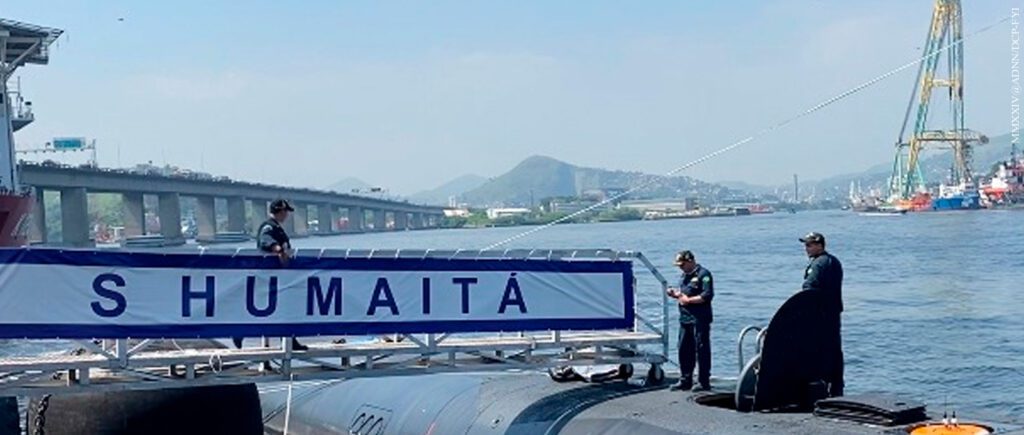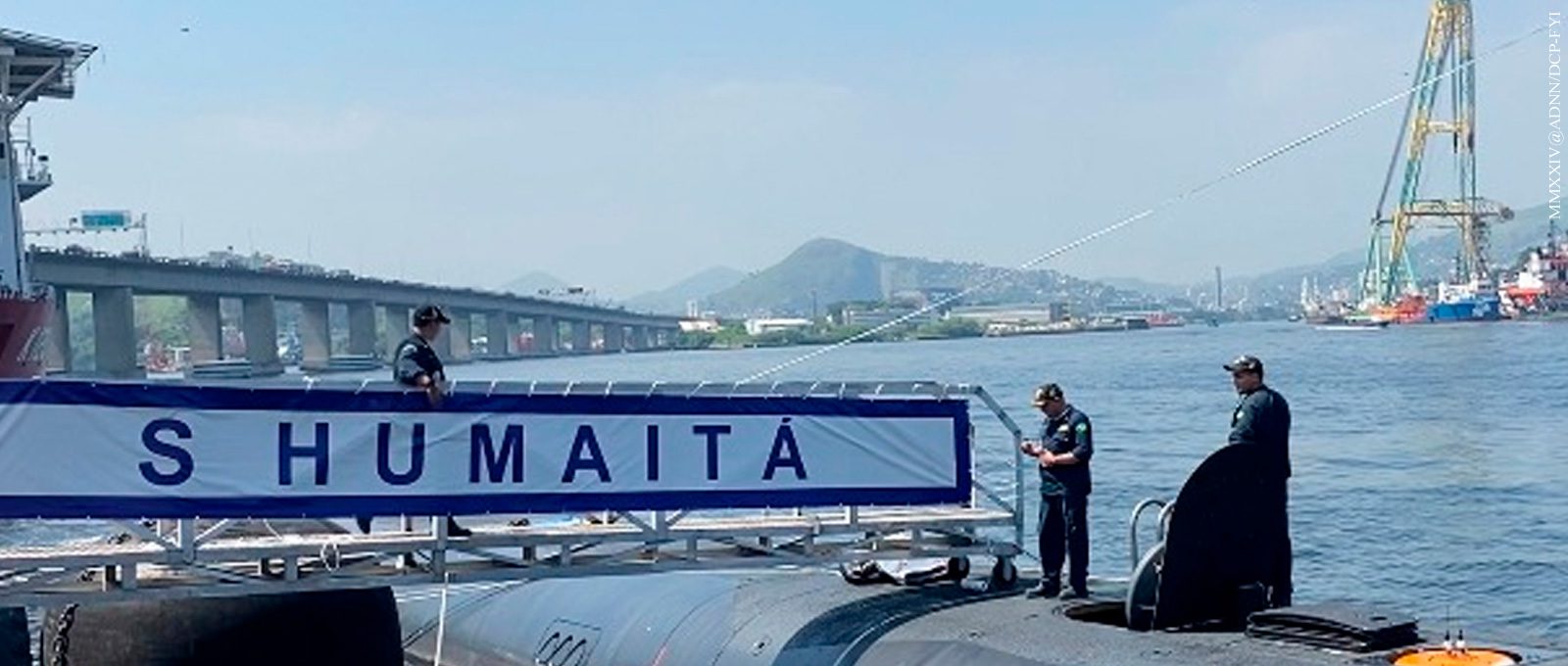Submarine “Humaitá” docked on Thursday (4) at the Almirante Castro e Silva Base in Niterói (RJ)
By 2T (RM2-T) Larissa Vieira – Rio de Janeiro, RJ
On Thursday morning (04), the Mocanguê Naval Complex (CNM) witnessed the first docking of a “Riachuelo” class submarine. The “Humaitá” Submarine (S41), based in Itaguaí (RJ), was transferred to the Naval Force’s Operational Sector on January 12, 2024, and will remain docked at the Almirante Castro e Silva Base (BACS), in the CNM, until April 5.
Last Thursday (28), a preliminary test was carried out in preparation for the official docking, which took place a week later. The aim was to ensure that the fenders (protection to prevent the hull from colliding with the quay) were well positioned, to determine the best approach for passing the gangplank and to choose the appropriate position on the quay. The tests were successful, ensuring a safe berthing.
Admiral Castro e Silva Base
Directly subordinate to the Submarine Force Command (ComForS) of the Brazilian Navy (MB), the Almirante Castro e Silva Submarine Base carries out industrial activity, providing maintenance services and infrastructure facilities, contributing primarily to the training of naval assets subordinate to ComForS and support for the establishments that make up this Force and, in a complementary way, for the Navy’s other naval assets. BACS was created on May 6, 1941, under the name of Submarine Flotilla Base, by Ministerial Notice No. 610 of May 6, 1941, and received its current name on September 27, 1946, in accordance with Notice No. 1865.
With the acquisition of the old “Humaitá” class submarines in 1971, the need arose to extend the quay to berth the new vessels. The expansion work began on September 22, 1972, increasing the quay by 70 meters. In 1986, during the administration of the then Minister of the Navy, Fleet Admiral Alfredo Karam, work was completed on the quay, which was configured as it is today, with a length of 432 meters, specially adapted to serve the “Tupi” and “Tikuna” class submarines, It also serves as a port for the “Felinto Perry” and “Guillobel” Submarine Relief Ships (NSS), and has already received the “Brasil” School Ship, “Niterói” Class Frigates, various merchant ships and even platforms.
According to the Commander of the “Humaiá” Submarine, Frigate Captain Martim Bezerra de Morais Júnior, docking at the BACS pier represents a return to the Fleet for the “Riachuelo” Class Submarines and a moment of nostalgia for all submariners, since the submarines of the previous classes, “Tupi” and “Tikuna”, have Mocanguê as their Headquarters.

“Humaitá” submarine
Equipped with diesel-electric propulsion, the “Humaitá” submarine is the second of the “Riachuelo” class to be incorporated into the Brazilian Navy. It has a crew of 60 soldiers trained to operate the modern sensors, missiles, torpedoes and mines with which the new Brazilian submarines, built under the Submarine Development Program (PROSUB), are equipped.
O Capitão de Fragata Martim relata que os próximos passos do “Humaitá” envolvem um retorno à Ilha da Madeira, em Itaguaí, para realizar o primeiro período de manutenção atracado. Após isso, a embarcação seguirá com as missões determinadas pela Esquadra e continuará a Avaliação Operacional dos submarinos da classe. “O Submarino ‘Humaitá’ é um vetor imprescindível na proteção da Amazônia Azul, considerando as suas capacidades em termos de sensores e armamentos. Convergindo sempre com os interesses marítimos do País em garantir a soberania do Estado Brasileiro”, afirmou o Comandante.
Com o objetivo de proteger a Amazônia Azul e garantir a soberania brasileira no mar, a Marinha do Brasil investe na expansão da Força Naval, com iniciativas estratégicas como o PROSUB, que prevê a construção de quatro submarinos com propulsão diesel-elétrica em território nacional. Até o momento, além do “Humaitá”, já foram prontificados os submarinos “Riachuelo” (S40) e “Tonelero” (S42), este último lançado ao mar em 27 de março, entrando em sua fase de testes. Ainda está prevista a entrega de mais um submarino convencional, o “Angostura” (S43). Além da modernização da Força de Submarinos, o PROSUB capacitará o País para a construção do seu primeiro Submarino Convencionalmente Armado com Propulsão Nuclear, o “Álvaro Alberto”, objeto precípuo do programa e um incremento sem igual no Poder Naval brasileiro e na Defesa Nacional.
Fonte: Agência Marinha de Notícias *** Translated by DEFCONPress FYI Team ***
